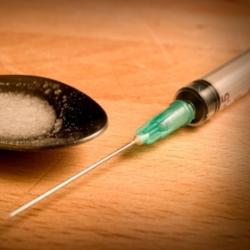Opioids make the largest contribution to illicit drug-related death, and overdose is the leading cause. One important issue in terms of response is the time between the last use of heroin and death. Is there time to intervene, or are such deaths so rapid as to make intervention impossible? Certainly this was the received wisdom when I first started researching overdose in the early 1990s. Despite the importance of the question, very little work has been conducted on the issue. In part, this is because it is a question that is difficult to answer, as many overdose deaths occur when the person is alone, so there are no witness reports.
The metabolism of heroin offers a potential means of to estimate the proportions of rapid and slow deaths in fatal overdoses. Since 2013, the Forensic Toxicology Laboratory of the New South Wales Forensic & Analytical Science Service has tested routinely for heroin metabolites. The absence of the metabolite 6-monoacetly-morphine (6MAM) in a heroin overdose strongly suggests that the death took more than around 30 minutes. In recent work I conducted in collaboration with Professor Johan Duflou, we found that 6MAM was absent in over half of cases, suggesting survival times of more than 30 minutes. Thus, in the majority of overdose cases there appears to be a substantial period of time in which life-saving resuscitation may occur.
Heroin overdose is reversible, and in most cases there is time to intervene. A number of strategies could be considered. The cardinal rule is always call an ambulance. Teaching heroin users CPR to keep people alive until an ambulance arrives appears worthwhile, as well as placing people in the recovery position so they do not inhale vomit (which can be fatal). Importantly, naloxone (the antidote to heroin overdose) has recently been made an over-the-counter drug in Australia. Getting naloxone out to heroin users may save lives that otherwise would be lost. We will not save all lives, but we now know that the idea that deaths are so quick nothing can be done is a myth.
This is an extract from a presentation by Professor Shane Darke at the NDARC weekly seminar on 11 February 2016.


